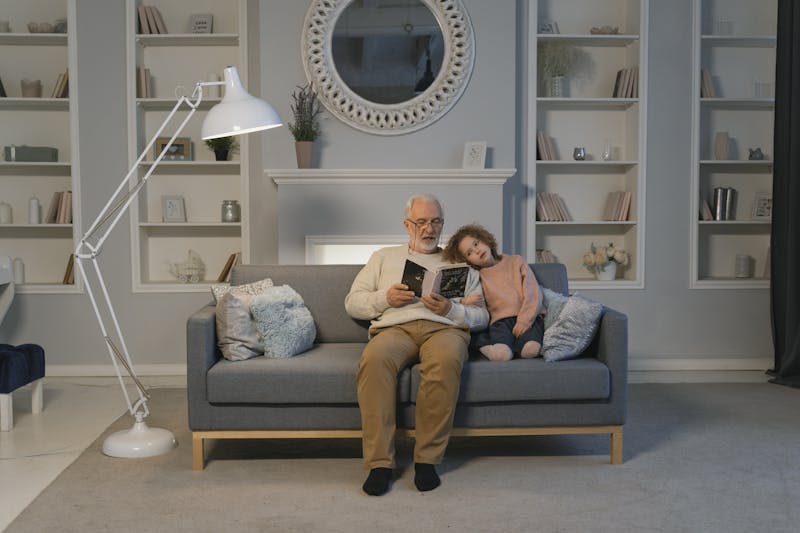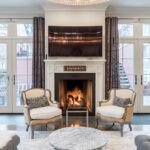It’s a given that you want your home to not only look great with the best furniture you can afford, it also needs to be fully functional for the individual who will be occupying it. If the individual has special needs, you will need to have more choices at your disposal than those persons who enjoy full functionality.

Photo by Tima Miroshnichenko
Says the pros at Naturwood Home Furnishings in Northern California, a great furniture company prides itself on providing the absolute best in value, selection, and service. This same philosophy also extends to home furnishings for disabled people such as those who suffer from autism.
When it comes to the home, the place of refuge where you spend most of your time, you need nothing but the best furniture that can provide you with a sensory friendly environment so that you can be both mobile and safe as possible when navigating your surroundings. In fact, your entire home needs to be designed with a sensory-friendly interior in mind.
But how can you create a home that’s more sensory friendly and, in a word, calm? According to a recent report by The Ability Toolbox, individuals with autism are said to suffer hypersensitivity to their surroundings. This arises from the visual aspects of textures and sounds. Taking the necessary steps to make your bedroom, and indeed your entire home, more comfortable and calm means making it sensory-friendly. Here’s how.
Go With Soothing Colors
It’s said to be typical for persons with autism to endure sensory overload when faced with a chaotic environment. Multi-color schemes, vibrant colors, and even bold patterns will distract an autistic person and leave them unable to focus. The best decision is to go with neutral coloring and to avoid busy wallpaper or curtain patterns.
Make Certain Clutter is Kept to a Minimum
Too many objects in a room can prove stressful to an autistic person. The space will feel claustrophobic and confusing. You should take the necessary steps to minimize the clutter by storing loose, everyday objects in closets or drawers. Tables and windowsills should be kept clear also. Small rooms should not be overcrowded with furniture.
Noise Levels Should be Controlled
Persons with autism will not only be confused by visual stimuli, but they can be hypersensitive to loud noises and sounds. Persistent noise that nonautistic people normally filter out such as loud bangs and buzzing electrical objects, can be especially distressing to a person with autism.
You should make sure to turn off electrical items when they are not in use. Also, be mindful of unexpected loud noises like slamming doors. The installation of specially engineered fixtures for the home like soft-close toilet seats and kitchen drawers will help with minimizing the danger of big, sudden, unexpected bangs in an everyday basis.
Soft Lighting is a Necessity
Experts maintain that it’s also of the utmost importance to control the lighting levels in the home as much as possible. Natural lighting always proves more soothing than artificial electrical light sources which can all too often be harsh. Overhead light fixtures can be especially harsh for autism sufferers.
During the evening hours, make certain to utilize soft lighting that promotes a calming ambience. This is said to be achieved by utilizing strategically placed lamps or dimmer switches for all overhead lighting fixtures. You might also want to consider bedroom blackout curtains that can aid in better, deeper, less disturbing sleep.
Go With Friendly Fabrics
Most people with autism have a “heightened tactile perception.” This is more commonly known simply, as “touch.” Stiff or scratchy materials often made from non-natural synthetic sources can create both tension to an autistic person and even discomfort.
It’s a best practice to go with sensory-friendly fabrics for your furniture to make certain the rooms in your home are relaxing. These fabrics can include cooling cotton towels, bedding, plus soft upholstery coverings for the sofas and chairs. Choose bamboo bedding when possible and all-natural wood furniture.
Create a Designated Sensory-Friendly Space
If there’s room enough in your home, you will want to consider creating a designated sensory-friendly space. The room can be designed as “safe space” or an escape from sensory stimuli. It will be a space where sensory stimuli will be purposely explored.
The room will ultimately help a person with autism regulate sensory input and can be an excellent rest area for when a break is required. A cozy den or family room that contains a sensory chair or sensory swing can make for an effective retreat. Or you can also designate an entire room with specialized sound, lighting, and tactile stimuli.
In the end, while autism can be debilitating to those who suffer from it, with just the right amount of attention paid to the home, the effects of the condition can be greatly mitigated. Reduced electric lighting sources, harsh sounds, and artificial materials can greatly improve the life of an autistic person while also encouraging them to be productive members of society.
Keep in mind that all-natural wood furniture not only provides beauty to your home, but it also can prove to be a real comfort to autistic people. The furniture is not only comfortable but when combined with natural cotton coverings, it is pleasing to the touch. It’s a good idea to consult with your nearest natural wood furniture store professional to find out what your options are for your home and family.




I had no idea there were so many ways to introduce and make the home sensory friendly. It’s great to learn about this and to begin to understand the importance of this for some people/families. Thanks for sharing this!